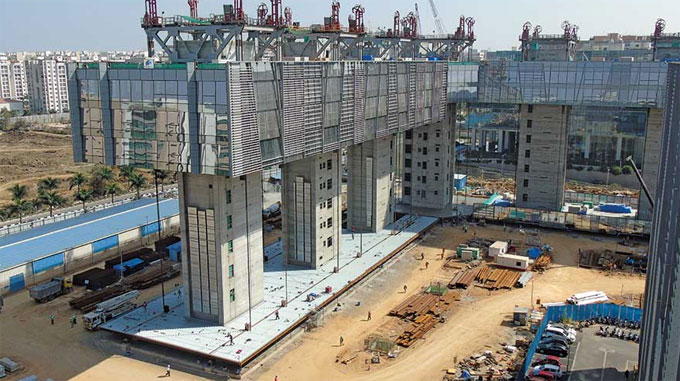
Advantages and Disadvantages of Top Down Construction
Top down construction is an opposite process of bottom-up construction in which the permanent structure is made from top to bottom of the basement along with deep searches. Here, the basement floors are made as the excavation progresses where concrete slabs work as lateral stimulating for the perimeter wall system. While ground level and basement slabs are poured, getting hold holes to allow excavation beneath and as every subgrade level is finished; the floors became lateral bracing for the perimeter wall system.
The Perimeter wall is generally known as Diaphragm wall or D Wall, is a single, safe method for all the constructional problems faced in underground construction and these walls give effective earth detention and good control over ground water movement.
These walls are capable to carry the superstructure loads and provide early utilization of the superstructure before the completion of substructure of any building. Basically it is used for deep digging projects where tieback installation is not possible and soil movements need to be decreased like construction of metro station, tunnel, underground etc.
Process of Construction:
1. This Top down construction can construct the perimeter wall, Constructpiles. Also keep the steel columns or stanchions in the construction of piles.
2. It casts the floor slab of the first basement level.
3. Work on the first step of excavation.
4. Start construction of the superstructure.
5. Next cast the floor slab of the second basement level Proceed to the second stage of excavation.
6. Again does the same process till the desired depth is reached.
7. Then construct the foundation slab and many more to complete the basement.
8. Keep constructing the superstructure till it finished.
Advantages:
? This method reduces the time for construction.
? Concrete D walls are most cost-effective in any stage of construction.
? Easier and economical construction of roof.
? The structural slab acts as an internal bracing to reduce the number of required tiebacks.
? Vibration-free operation reduces the potential for ground movement.
? Needs less width for construction area.
Disadvantages:
? Unable to install external waterproofing outside the walls.
? Potential water leakage at the joints.
? More complicated connections for roofs, floor and base slabs.
? There is limited access to excavation and limited space for the construction of base slab.
? Complex design involved.


